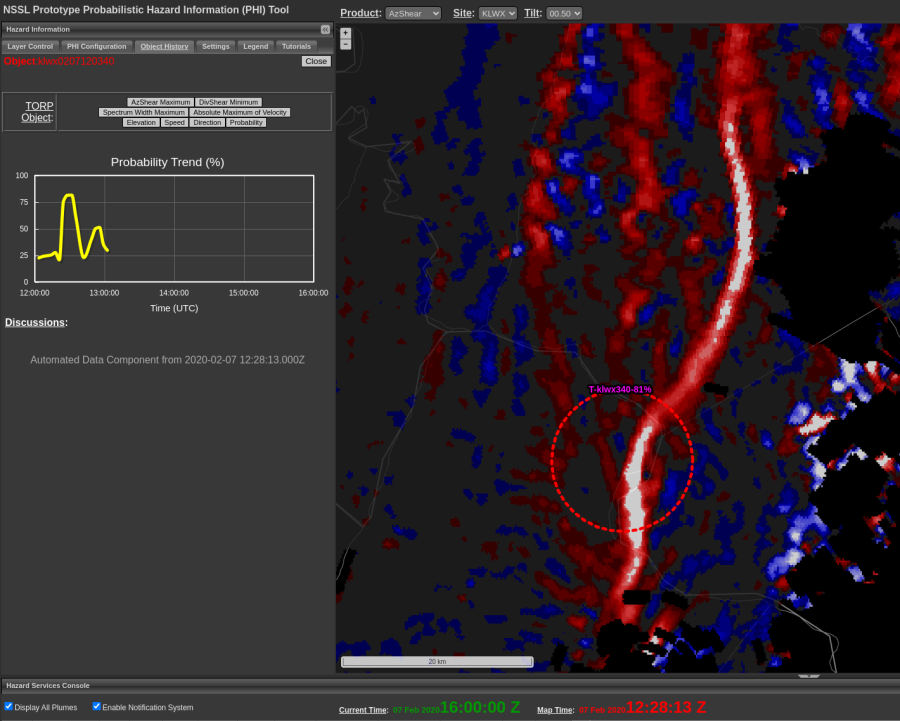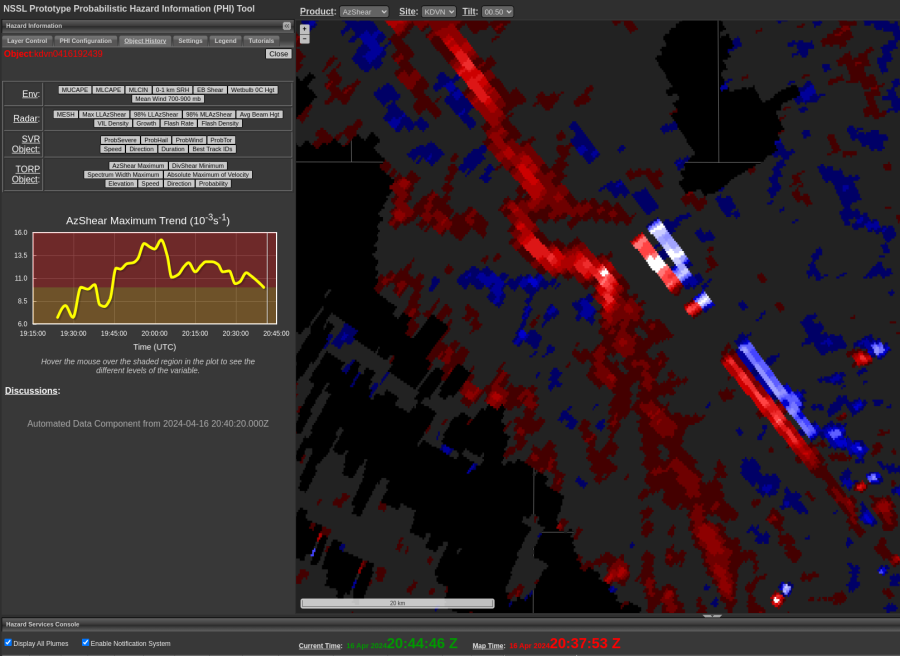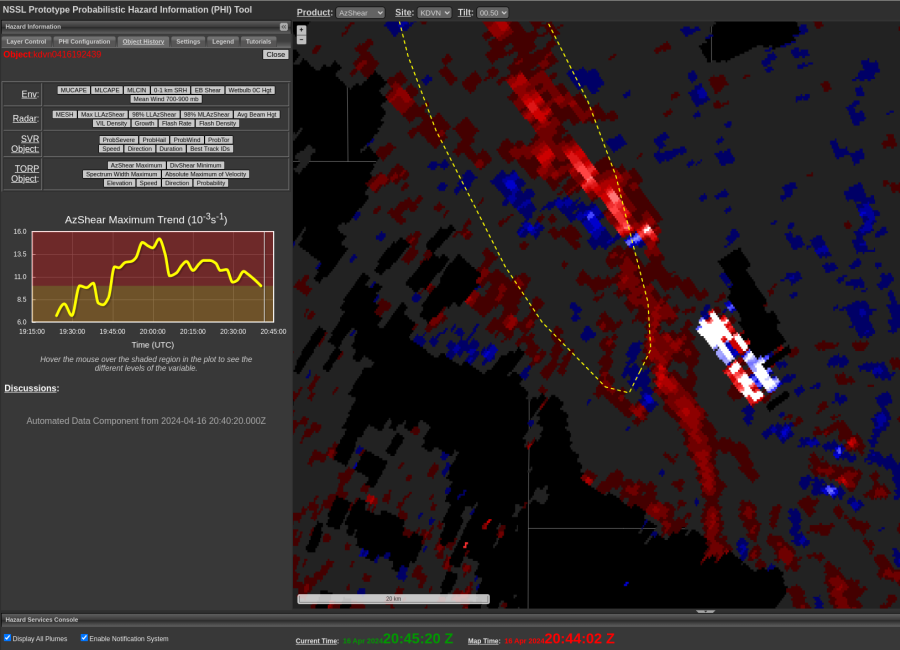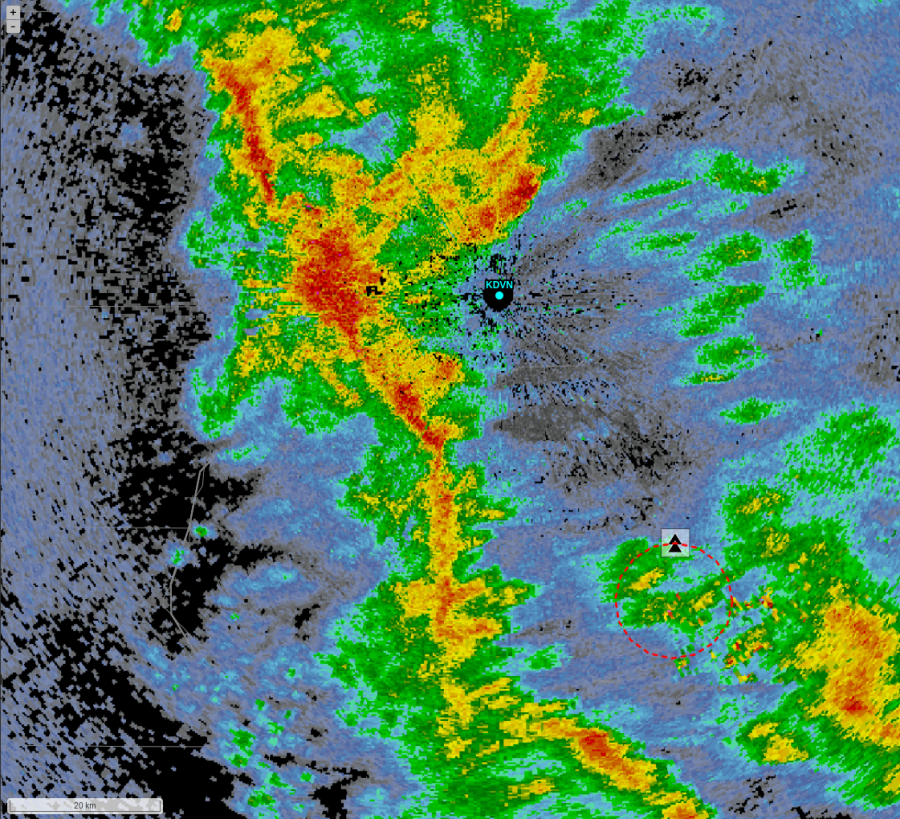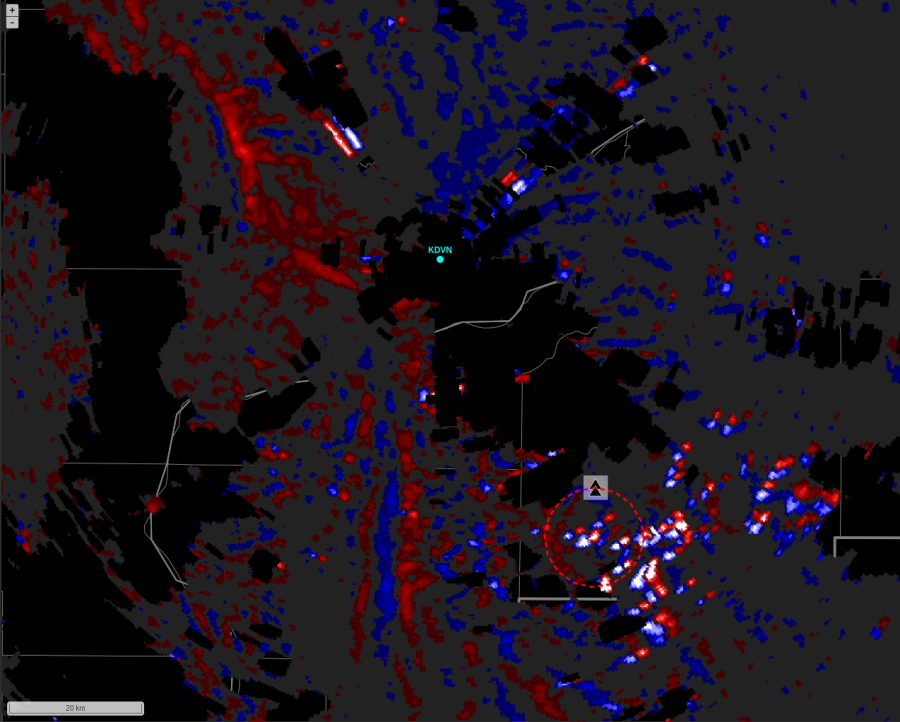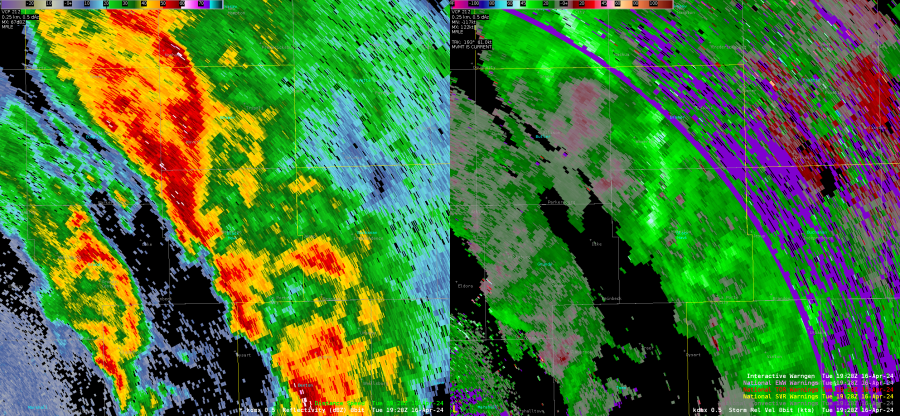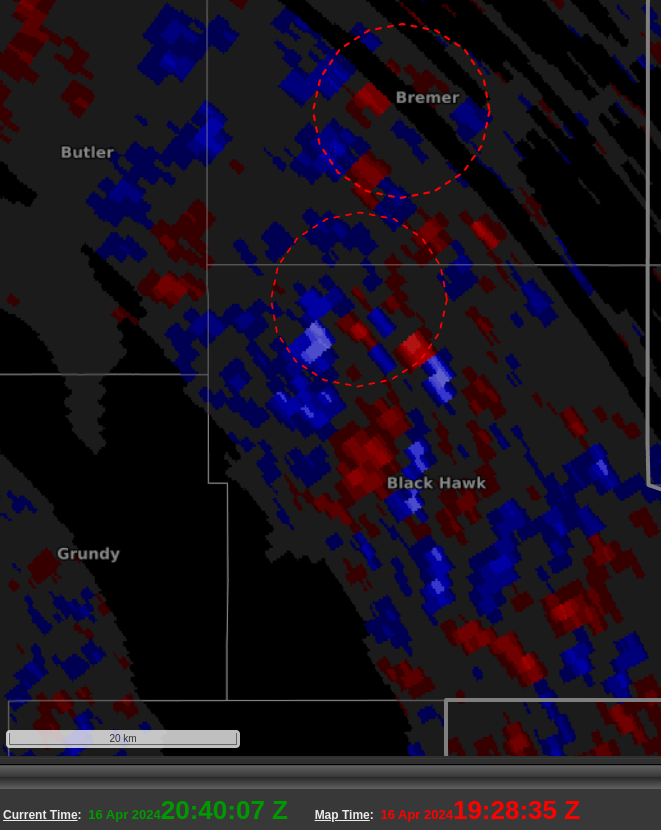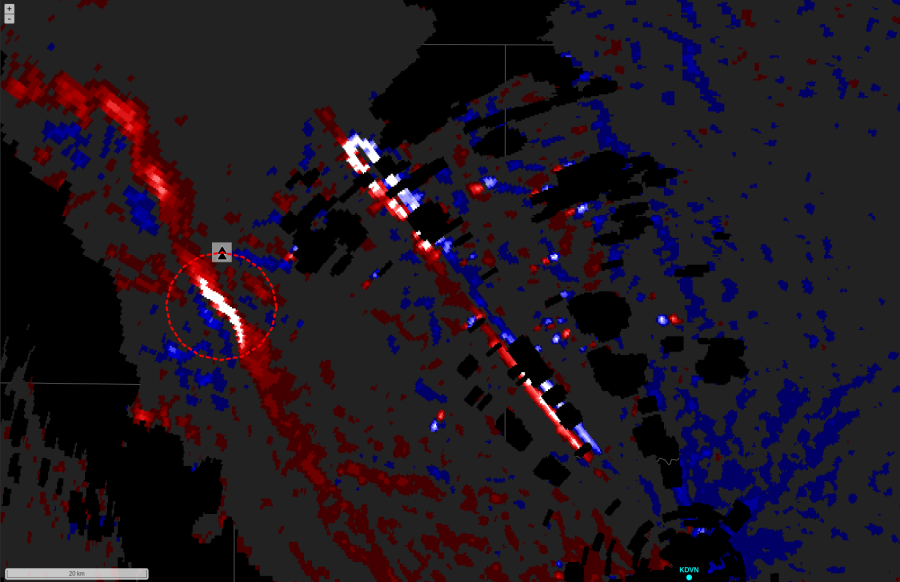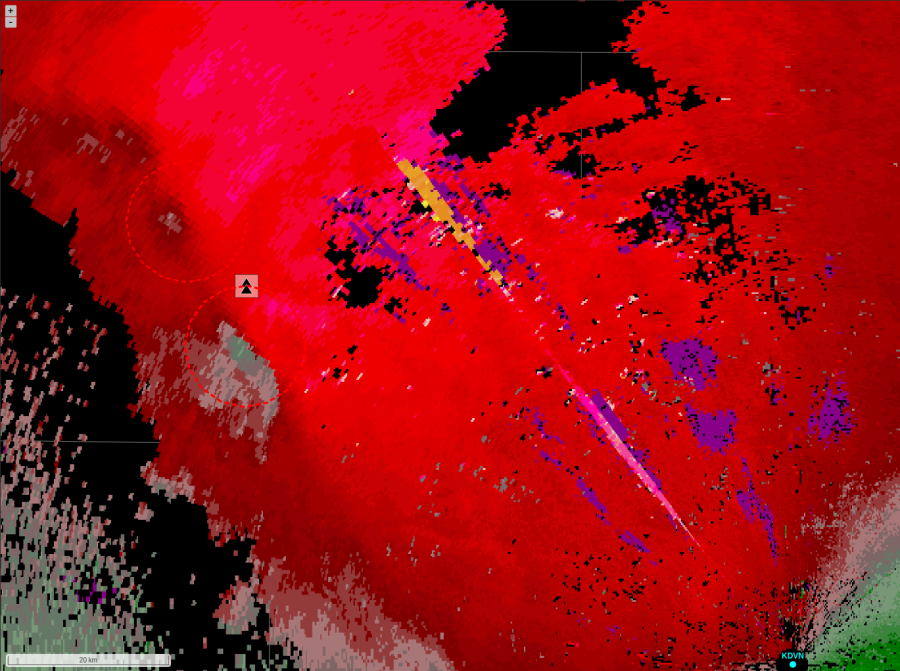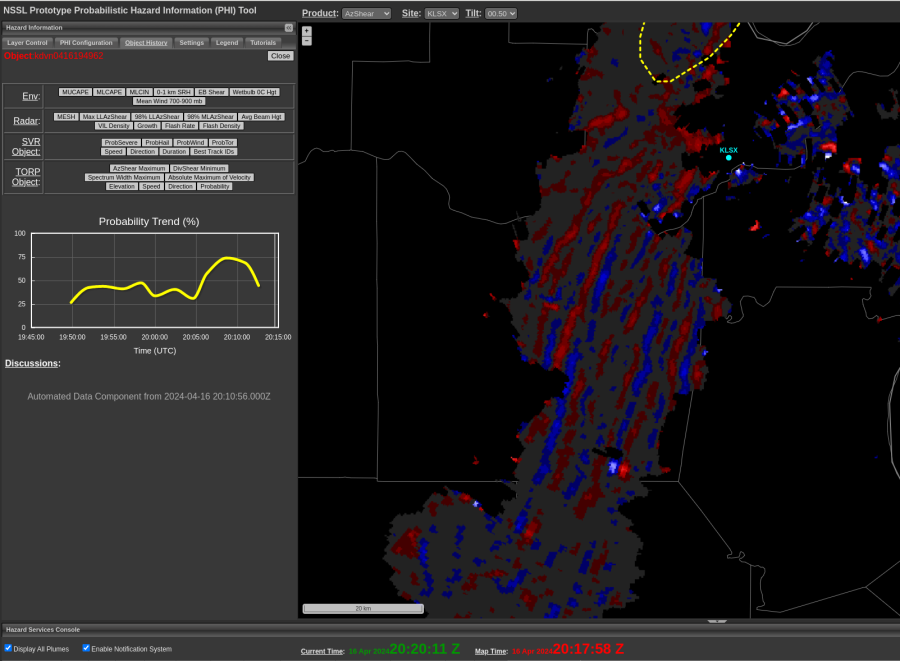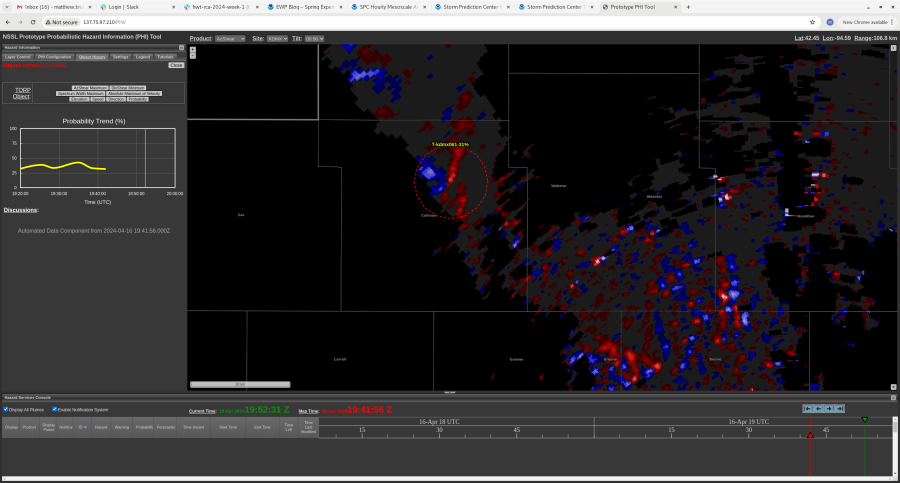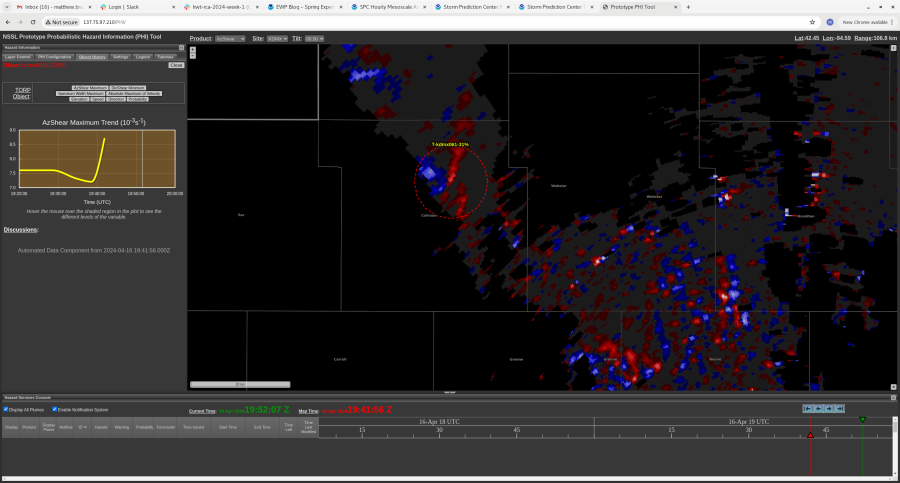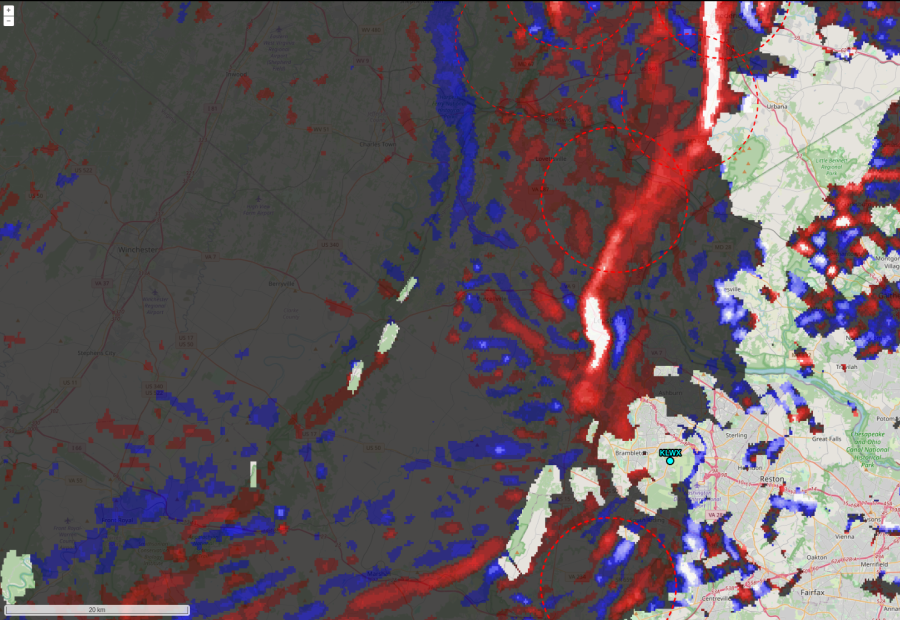
An area of higher AzShear moved close to the KLWX radar at 1221z and TORP struggled to pick up on this. TORP has a known QC to filter out data within a certain range (30km) from the radar, but even when that was turned off, TORP did not have anything. 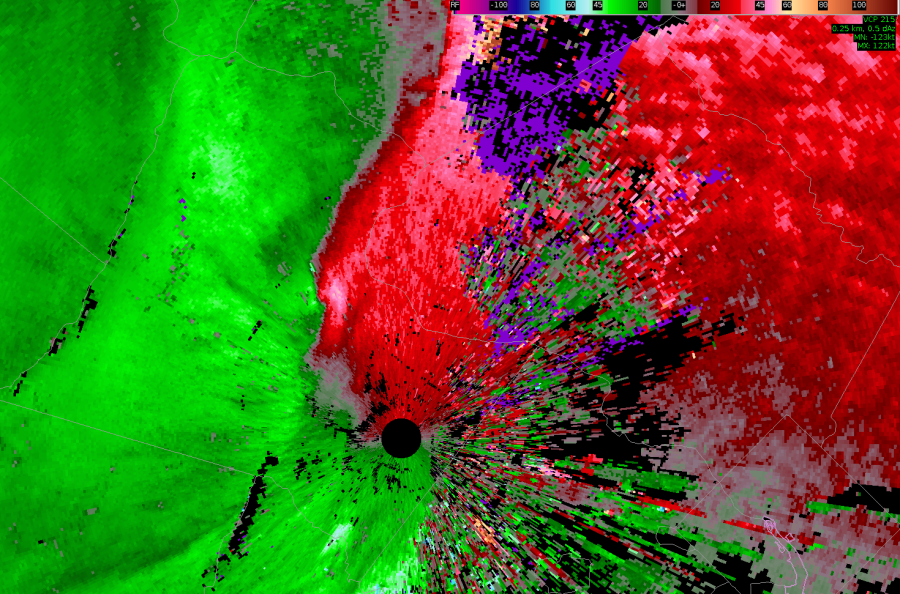
Looking at the velocity data, there is a couplet there just to the northwest of the radar where AzShear is maximized. So, even though AzShear responded well to the couplet, TORP struggled due to the close proximity to the KLWX radar.
The TORP graph shows that when the couplet with the high AzShear moved farther away from the radar, the probabilities shot up from 25% to 80%. And this couplet did produce a tornado.
-Stormy Surge


